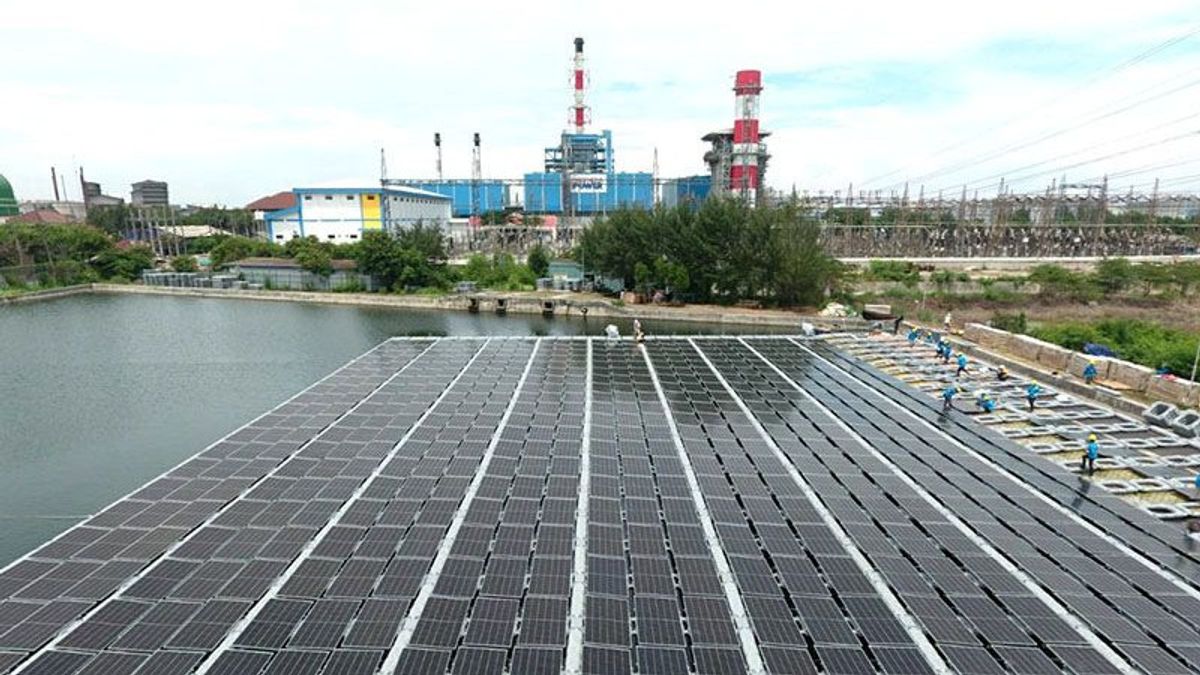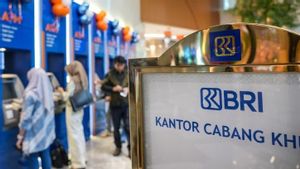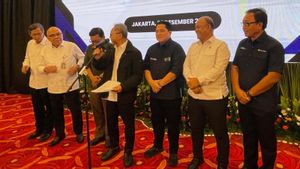JAKARTA - PT TBS Energi Utama Tbk through its subsidiary, PT Energi Baru TBS in partnership with PLN Batam and PLN Nusantara Power signed a memorandum of understanding (MoU) to develop the PLTS Apung Tembesi project.
Later the electricity generated from this plant will be used to illuminate Batam Island and its surroundings, which are connected to the Batam PLN power grid.
Direktur Utama Energi Baru TBS, Dimas Adi Wibowo mengatakan, proyek ini merupakan langkah penting dalam transformasi energi di Pulau Batam dan sejalan dengan dukungan perusahaan terhadap visi pemerintah dalam mencapai target energi terbarukan.
"This project is an important step in energy transformation on Batam Island and our support for the government's vision to achieve the target of renewable energy," he told the media, Monday, April 17.
With a capacity of 42 MWp, he continued, the total investment to be spent by FFB is estimated at 50 million US dollars and is expected to start operating in 2024.
"This project is a priority for FFB in the renewable energy sector and will be the first large-scale renewable energy project on Batam Island," he continued.
Currently, Nusantara Power is developing a PLTS Apung in Cirata Reservoir, West Java, with a capacity of 145 MWac, which will be the first PLTS Apung in Indonesia.
The involvement of Nusantara Power in the PLTS Apung Tembesi project is expected to improve the quality and reliability of electricity and contribute to strengthening electricity on Batam Island.
Meanwhile, the Director of PT TBS Energi Utama Tbk, July Oktarina, said that this initiative is in line with FFB's commitment to developing renewable energy in Indonesia and hopes that the PLTS Apung Tembesi project will be an example for renewable energy projects in Indonesia.
"We believe that the PLTS Apung Tembesi project will be an inspirational example for the development of other renewable energy in Indonesia," said Juli.
Just so you know, electricity infrastructure in Batam Island is still dominated by fossil energy, such as gas, diesel and coal.
Therefore, he said, the presence of the PLTS Apung Tembesi will be an initial milestone in the development of large-scale renewable energy on Batam Island.
With so many reservoirs on Batam Island, the development of PLTS Apung is expected to be a strategy to increase the mix of renewable energy in the region.
The reservoir on Batam Island functions primarily as a drinking water provider, so the existence of PLTS Apung must go hand in hand with efforts to maintain and optimize the main function of the reservoir.
FFB and Nusantara Power will conduct environmental studies and choose technology that meets standard standards and does not change the quality of reservoir water when the generator operates.
Currently, Batam Island has a peak load of around 440 MW. The existence of PLTS Apung with a capacity of 42 MWp will contribute to strengthening electricity on Batam Island, as well as increasing the ratio of renewable energy on the island.
The English, Chinese, Japanese, Arabic, and French versions are automatically generated by the AI. So there may still be inaccuracies in translating, please always see Indonesian as our main language. (system supported by DigitalSiber.id)













